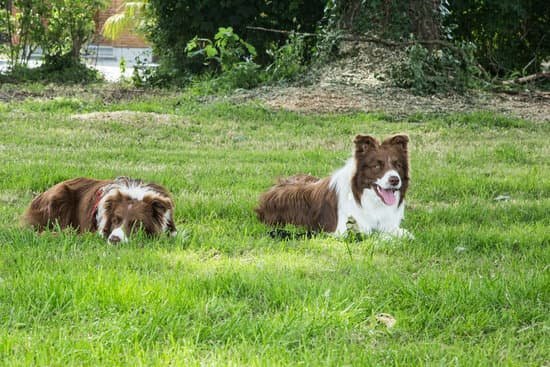Have you ever wondered how they train dogs to smell drugs? Drug-sniffing dogs play a crucial role in law enforcement, helping to detect illicit substances and prevent them from entering our communities. In this article, we will explore the science behind a dog’s sense of smell, the training process for drug detection, and the ethical considerations of using dogs for this purpose.
Dogs have an incredible sense of smell, with the ability to detect even trace amounts of drugs. Understanding the science behind a dog’s sense of smell is essential in training them for drug detection. From selecting the right dog breeds to simulating drug detection scenarios in training, every aspect is carefully planned to ensure the success of these valuable animals in law enforcement.
Positive reinforcement plays a key role in training drug-sniffing dogs. By using rewards and praise, handlers motivate and reinforce desired behavior in their canine partners. Additionally, the bond between handler and dog is crucial for effective drug detection. Maintaining this strong bond and consistently retraining these dogs are vital for their continued success in detecting drugs. Join us as we delve into the intricate world of training drug-sniffing dogs and explore their impact on law enforcement efforts.
The Science Behind a Dog’s Sense of Smell
Dogs have an incredible sense of smell, which makes them highly effective in detecting drugs. The science behind a dog’s sense of smell lies in their olfactory system, which is significantly more advanced than that of humans. Dogs have up to 300 million olfactory receptors in their noses, compared to only 5-6 million in humans.
This allows them to detect even the faintest odors and distinguish between different scents with great accuracy. Additionally, the part of a dog’s brain that is dedicated to analyzing smells is approximately 40 times larger than the corresponding part in humans, further enhancing their olfactory capabilities.
When it comes to training dogs to smell drugs, understanding the science behind their sense of smell is crucial. Trainers use this knowledge to develop specialized training programs that harness a dog’s natural ability to detect odors. Dogs are trained to sniff out specific drug scents through a process called “odor imprinting,” where they become familiar with the target odor by repeatedly associating it with a positive experience or reward.
In addition to their outstanding sense of smell, dogs also have the ability to pick up on subtle changes in human behavior and body language. This can be useful during drug detection scenarios, as handlers may not always be aware of potential cues from suspects or other individuals involved. By understanding the science behind a dog’s sense of smell and behavior, trainers and handlers can maximize the effectiveness of drug-sniffing dogs in law enforcement operations.
- Understanding the dog’s olfactory system
- The role of olfactory receptors in scent detection
- Utilizing the brain’s processing power for analyzing smells
Selecting and Training the Right Dog Breeds for Drug Detection
When it comes to training dogs to detect drugs, selecting the right breeds is crucial. Not all dog breeds have the same level of olfactory ability, which is why certain breeds are preferred for drug detection work. For example, breeds like German Shepherds, Belgian Malinois, Labrador Retrievers, and Springer Spaniels are commonly chosen for their strong sense of smell and high energy levels. These characteristics make them well-suited for the rigorous training and demanding work involved in drug detection.
The process of training these dogs to smell drugs starts with familiarizing them with the scents of various narcotics such as cocaine, heroin, marijuana, and methamphetamine. This initial exposure helps the dogs develop a recognition of these specific odors. Trainers use a method called “scent imprinting” to introduce these scents to the dogs in a controlled environment. Once the dogs can recognize and differentiate these scents, they progress to more advanced training exercises that simulate real-world drug detection scenarios.
Positive reinforcement plays a significant role in the training process. Dogs are rewarded with treats or toys when they successfully identify and alert their handlers to the presence of drugs. This encourages them to continue performing well during training sessions. In addition to rewards, consistent praise from trainers also strengthens the bond between handlers and their canine partners, which is essential in maintaining motivation and focus during drug detection work.
| Characteristic | Example Breed |
|---|---|
| Strong sense of smell | Labrador Retriever |
| High energy levels | Belgian Malinois |
| Obedience and intelligence | German Shepherd |
The Role of Positive Reinforcement in Drug Detection Training
One key aspect of positive reinforcement is using treats and toys as rewards for the dogs when they successfully complete a task or demonstrate the desired behavior. By associating the detection of drugs with a positive outcome, such as receiving a tasty treat or getting to play with their favorite toy, dogs are motivated to continue performing that behavior. This creates a strong link between finding drugs and receiving a reward, which enhances their drive to carry out successful searches.
In addition to treats and toys, drug detection training also utilizes verbal praise and affection as forms of positive reinforcement. When a dog successfully identifies the presence of drugs, handlers will often shower them with verbal affirmations and affectionate gestures to reinforce their good work. This form of positive reinforcement helps build rapport between the dog and their handler, strengthening their bond and further motivating the dog to excel in their drug detection duties.
| Positive Reinforcement Tools | Examples |
|---|---|
| Treats | Using small food rewards to incentivize correct drug identification |
| Toys | Allowing dogs to play with their favorite toys as a reward for successful searches |
| Verbal Praise | Providing enthusiastic verbal affirmations when the dog detects drugs accurately |
Simulating Drug Detection Scenarios in Training
Use of Training Aids
In order to train dogs to detect drugs, trainers use a variety of training aids, which are essentially scents that mimic the odor of different illegal substances. These training aids can include cocaine, heroin, marijuana, and methamphetamine. The use of these aids allows dogs to become familiar with the specific scents they will encounter in real-life drug detection scenarios.
Training Environments
To simulate real-world situations, dogs in training are exposed to different environments where drugs may be hidden. This includes searching vehicles, buildings, luggage, and open spaces. By training in various locations, dogs learn to apply their detection skills in different settings and become more adaptable when facing new challenges.
Scenario-Based Training
Trainers also create specific scenarios during training to challenge the dogs’ detection abilities. For example, they may set up exercises where drugs are concealed in difficult-to-reach places or mixed with distracting scents. This type of training helps dogs develop their focus and perseverance when faced with complex detection tasks.
By simulating realistic drug detection scenarios in training, handlers can ensure that their canine partners are well-prepared for the challenges they will encounter in the field. This method plays a crucial role in how they train dogs to smell drugs efficiently and effectively.
The Importance of Handler-Dog Bond in Drug-Sniffing Teams
Having a strong bond between a drug-sniffing dog and its handler is crucial for the success of their partnership. The relationship between the two directly impacts the effectiveness of drug detection operations, as well as the overall well-being of the dog. Here are some key points to consider about the importance of the handler-dog bond in drug-sniffing teams:
- Trust and Communication: A strong bond between a handler and their dog is built on trust and effective communication. Handlers must be attuned to their dog’s behavior and signals, while also providing clear commands and guidance during operations.
- Teamwork: Drug detection is a collaborative effort between the handler and their canine partner. When they work seamlessly together, they can cover more ground, identify potential threats, and execute successful searches.
- Stress Management: A close bond with their handler helps dogs feel secure and confident in high-stress environments such as airports, border crossings, or search operations. This reduces anxiety in the dog and improves their ability to focus on detecting drugs effectively.
Maintaining a strong handler-dog bond requires ongoing training, positive reinforcement, regular exercise, playtime, and nurturing care from the handler. Ultimately, this partnership contributes significantly to law enforcement efforts in combating drug trafficking and keeping communities safe.
Real-Life Examples of Drug Detection Success Stories
There have been numerous instances where the strong bond between handlers and their dogs has led to successful drug detection operations. In one notable case at an international airport, a highly trained drug-sniffing dog alerted its handler to a passenger who was attempting to smuggle illegal substances through customs. Thanks to the keen instincts of both the dog and its handler, a significant amount of drugs was intercepted before entering circulation.
In another instance, a K-9 team working at a busy cargo port successfully uncovered hidden narcotics concealed within shipping containers. The seamless coordination between the handler and their dog played a pivotal role in identifying illicit substances among legitimate cargo shipments.
These real-life examples underscore how important it is for drug detection teams to establish and nurture a strong bond between handlers and their canine partners. Such partnerships not only yield successful outcomes in intercepting illegal drugs but also demonstrate the invaluable contribution of trained dogs in law enforcement efforts aimed at combating substance abuse.
Maintaining and Retraining Drug-Sniffing Dogs
Regular Veterinary Check-Ups
Drug-sniffing dogs are valuable assets in law enforcement, so it is essential to prioritize their health and well-being. Handlers should schedule regular veterinary check-ups for their canine partners to ensure they are in optimal physical condition. These check-ups can detect any health issues early on, preventing potential setbacks in their training and detection work.
Nutrition and Exercise
Proper nutrition and regular exercise are crucial for maintaining the overall fitness of drug-sniffing dogs. A balanced diet tailored to their specific needs, along with regular exercise routines, helps keep them physically fit and mentally sharp. Handlers should pay close attention to their dog’s weight, energy levels, and overall behavior to ensure they are in peak condition for their detection work.
Retraining Drug-Sniffing Dogs for Continued Effectiveness
Ongoing Training Sessions
Even after initial drug detection training, ongoing training sessions are vital to maintain the effectiveness of drug-sniffing dogs. Regular practice helps reinforce their skills and keeps them sharp in identifying various types of drugs. Handlers use a variety of training techniques, including mock scenarios and controlled exercises, to continue honing the dog’s detection abilities.
Adapting to New Substances
As new drugs emerge in the illegal market, it is crucial for handlers to retrain drug-sniffing dogs to detect these substances effectively. This requires staying informed about current drug trends and adjusting training protocols accordingly. By staying proactive in updating their skills, drug-sniffing dogs can remain effective in combating the ever-evolving landscape of illegal narcotics.
Overall, maintaining the health and well-being of drug-sniffing dogs while providing ongoing retraining ensures that these invaluable assets remain a critical tool in law enforcement’s fight against illicit drugs. Regular veterinary care, proper nutrition, exercise, and continuous training are essential components in preserving the effectiveness of these highly skilled canines.
Real-Life Examples of Drug Detection Success Stories
Drug-sniffing dogs have been an integral part of law enforcement efforts to detect and combat drug trafficking for decades. These highly trained canines use their remarkable sense of smell to detect illegal substances, aiding in the apprehension of criminals and the interception of illicit drugs. While the process of training these dogs may seem mysterious to many, understanding the methods and success stories can shed light on just how they are able to identify narcotics with such precision.
One notable success story involves a drug-sniffing dog named K9 Rex, who played a crucial role in uncovering a large shipment of cocaine at a border checkpoint. Through his rigorous training and keen sense of smell, K9 Rex was able to alert his handler to the presence of drugs hidden within the cargo, ultimately leading to a significant seizure. This is just one example of the invaluable contributions that drug-sniffing dogs make in law enforcement efforts.
Another remarkable success story underscores the exceptional training and dedication of drug-detection dogs in identifying hidden narcotics in unconventional settings. In this instance, a specially trained Labrador named K9 Bella detected a substantial quantity of heroin concealed within an intricate series of compartments inside a vehicle. Through her intensive training and unwavering focus, K9 Bella was able to locate the illicit substances effectively, preventing their distribution into communities.
These real-life examples not only highlight the impressive capabilities of drug-sniffing dogs but also emphasize how they train dogs to smell drugs through carefully designed programs that simulate actual detection scenarios. By exposing these canines to various odors and consistently reinforcing positive behavior, trainers are able to hone their ability to detect specific scents associated with different types of drugs.
The relentless dedication of both trainers and handlers ensures that these remarkable animals are equipped to play a vital role in combatting drug-related crimes.
The Ethical Considerations of Using Dogs for Drug Detection
Drug detection dogs play a vital role in law enforcement by helping to locate illegal drugs in various settings. However, the use of these animals in such operations raises important ethical considerations. One of the most pressing ethical issues is the potential harm and stress that drug detection training and work may cause to the dogs themselves. This section will delve into the ethical considerations of using dogs for drug detection and how law enforcement agencies address these concerns.
One of the primary ethical considerations is ensuring the well-being and humane treatment of the drug-sniffing dogs. Training these animals to detect drugs involves exposing them to various substances repeatedly, which can be mentally and physically taxing. Additionally, working environments can be stressful for the dogs, as they are often placed in high-pressure situations where their performance is critical. Striking a balance between effective law enforcement practices and animal welfare is crucial in addressing this concern.
Another ethical consideration revolves around false alerts or indications given by drug detection dogs, which can lead to unwarranted searches or accusations against innocent individuals. This issue raises questions about the reliability and accuracy of canine drug detection methods.
It also highlights the importance of ensuring proper training and certification protocols for both the dogs and their handlers to minimize these occurrences. Addressing these concerns involves continually evaluating and refining training methods to improve accuracy while minimizing potential negative consequences for civilians.
Law enforcement agencies must adhere to strict guidelines when using drug detection dogs to ensure legal and ethical standards are upheld. By prioritizing proper care for these animals, minimizing false alerts, and maintaining transparency in their use, agencies can mitigate some of the ethical concerns associated with employing drug-sniffing dogs in law enforcement operations.
Conclusion
In conclusion, drug-sniffing dogs play a crucial role in law enforcement and border control efforts, thanks to their exceptional sense of smell and ability to detect even trace amounts of illegal substances. The science behind how they train dogs to smell drugs is fascinating, and it is this expertise that enables these highly skilled canines to assist in the fight against drug trafficking and substance abuse.
As technology continues to advance, there is no doubt that the future of drug-sniffing dogs in law enforcement looks promising, with ongoing research and development focused on enhancing their capabilities and efficiency.
The impact of drug-sniffing dogs on law enforcement has been significant, leading to numerous successful busts and seizures of illicit substances. Their ability to detect drugs in a variety of scenarios, from airports to traffic stops, has made them an invaluable tool for authorities in combating the illegal drug trade. Additionally, the bond between handlers and their canine partners cannot be understated, as it plays a pivotal role in the effectiveness of drug detection operations.
Moving forward, it is important to consider the ethical implications of using dogs for drug detection purposes. As with any working animal, ensuring their welfare and addressing any potential concerns regarding their training and deployment is crucial.
By upholding high standards of care for these specially trained dogs, law enforcement agencies can continue to harness their unique olfactory abilities while also respecting their well-being. Ultimately, the impact and future of drug-sniffing dogs in law enforcement will continue to evolve as new methods are developed and ethical guidelines are upheld.
Frequently Asked Questions
How Do I Train My Dog to Be a Sniffer Dog?
Training a dog to be a sniffer dog involves using their natural scenting abilities to detect specific odors. This training usually starts with basic obedience and then progresses to scent detection work.
How Long Does It Take to Train a Dog to Sniffer?
The time it takes to train a dog for sniffing purposes depends on the individual dog, the specific training program, and the desired level of expertise. It can range from several weeks to months of consistent training and practice.
How Accurate Are Drug Sniffing Dogs?
Drug sniffing dogs are generally accurate in detecting the presence of drugs, but their accuracy can be influenced by several factors such as training quality, handler influence, environment, and the dog’s health. When properly trained and maintained, drug sniffing dogs can be highly reliable in detecting drugs.

Welcome to the blog! I am a professional dog trainer and have been working with dogs for many years. In this blog, I will be discussing various topics related to dog training, including tips, tricks, and advice. I hope you find this information helpful and informative. Thanks for reading!





